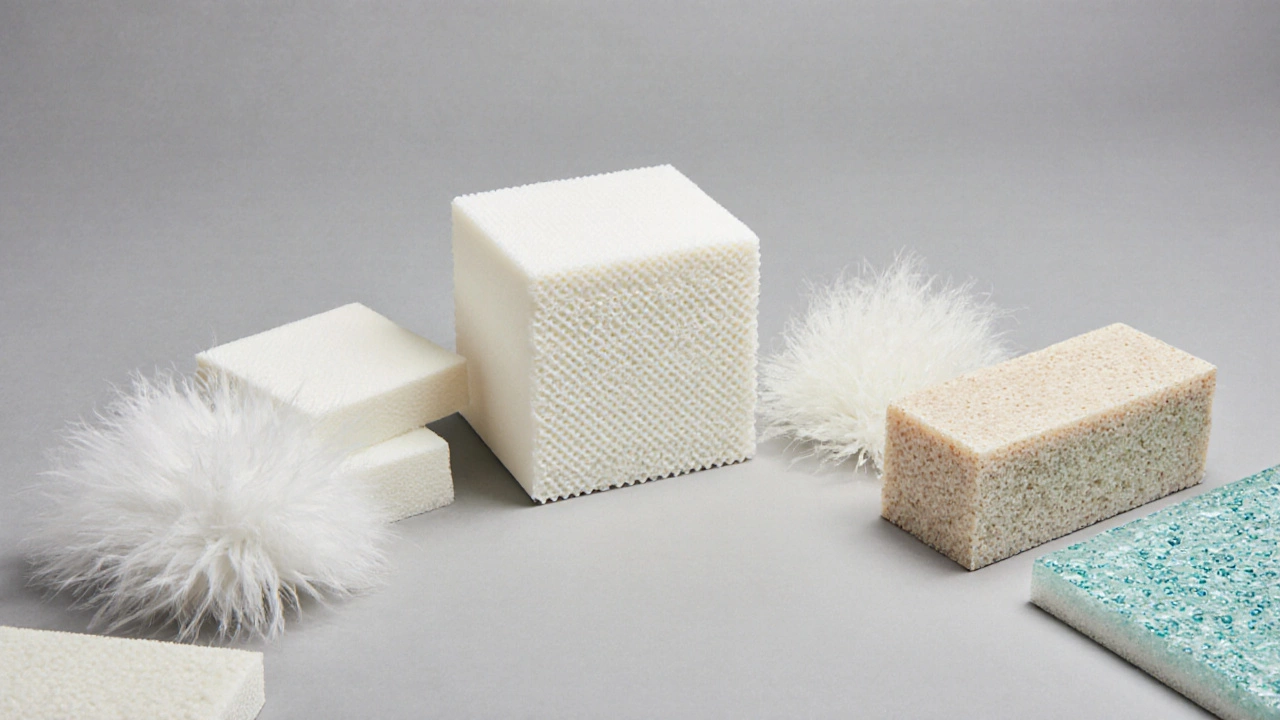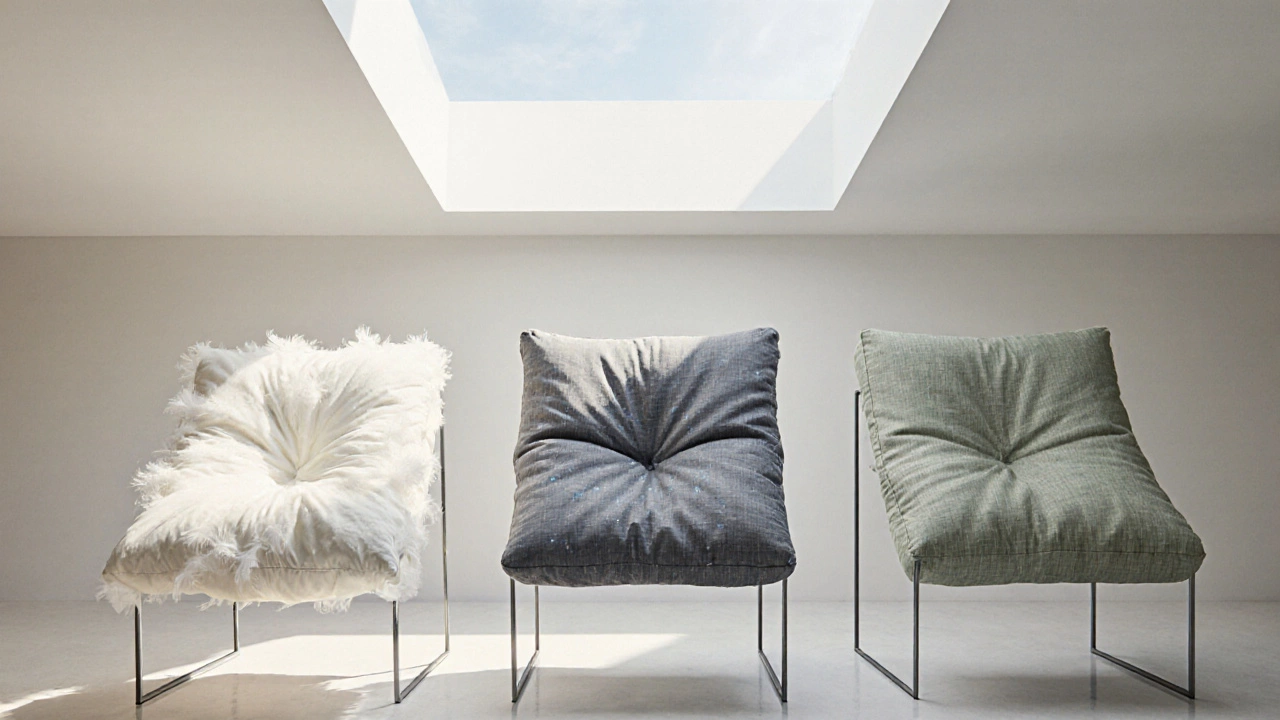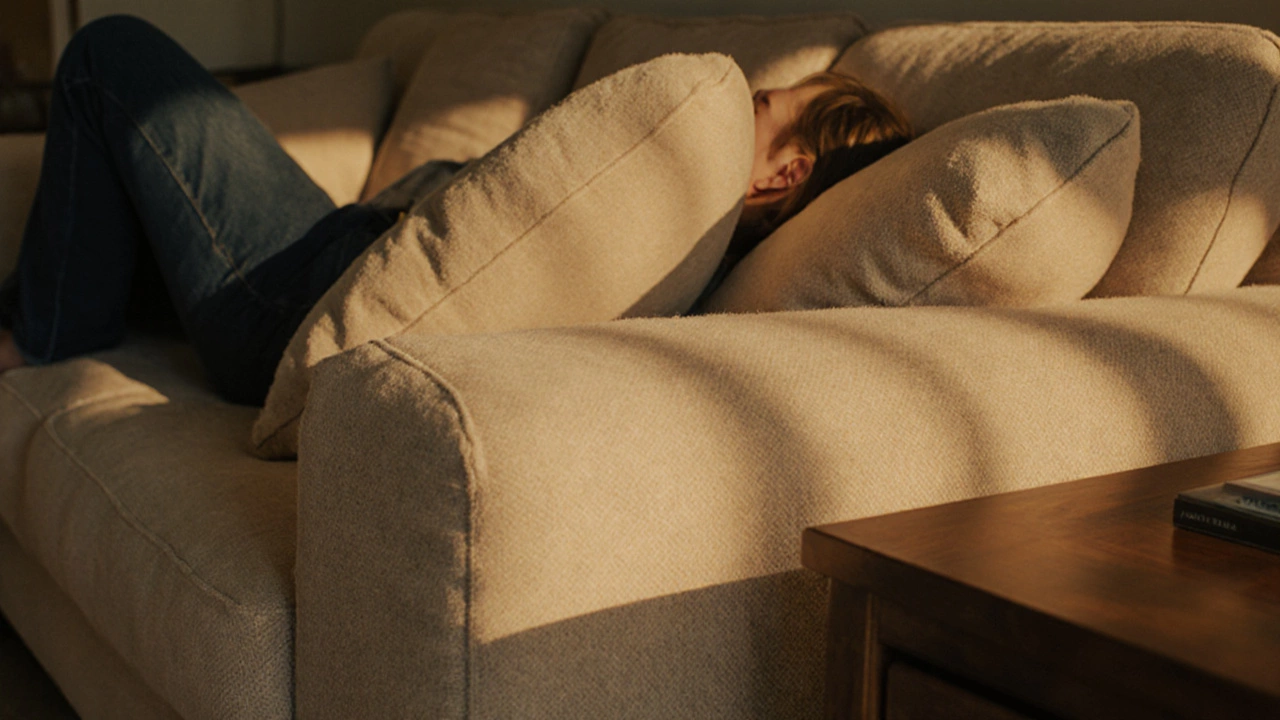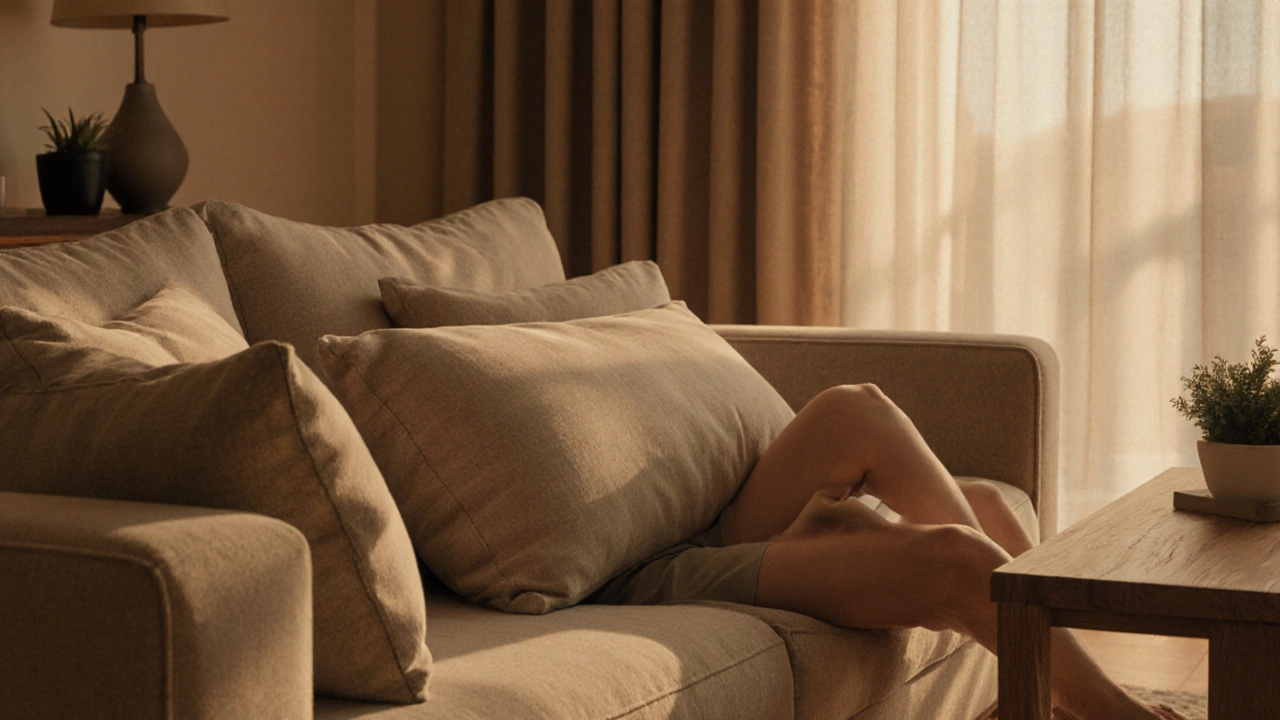Couch Cushion Comfort Calculator
Find Your Perfect Cushion
Quick Summary
- Memory foam, high‑resilience (HR) foam, and down‑feather blends rank highest for plush comfort.
- Firmness is measured by density (lb/ft³) and indentation force deflection (IFD).
- Consider durability, climate, and budget: HR foam lasts 8‑10years, while down needs regular fluffing.
- Eco‑friendly options like latex or recycled polyester give comfort without harming the planet.
- Use a 5‑point checklist - material, firmness, cover, size, and warranty - before you buy.
When it comes to sinking into your living room, the secret lies in the comfortable couch cushions you choose. A cushion that feels just right can turn a hard, flat sofa into a favorite spot for movie marathons, afternoon naps, and family gatherings. Below we break down how comfort is measured, which cushion materials lead the pack, and what to look for before you spend your hard‑earned cash.
How to Judge Cushion Comfort
Comfort isn’t just a vague feeling; it can be quantified. Two key metrics dominate the industry:
- Density - measured in pounds per cubic foot (lb/ft³). Higher density means the cushion can support more weight without flattening quickly.
- Indentation Force Deflection (IFD) - the force needed to compress the cushion a certain amount. A lower IFD = softer, a higher IFD = firmer.
Most reputable manufacturers list both numbers. For a plush, sink‑in experience, aim for density between 1.8‑2.5lb/ft³ and an IFD in the 20‑30 range. If you need a firmer seat for back support, look for density above 2.5lb/ft³ and IFD above 35.

Top Cushion Materials Explained
Couch cushion is a soft padding component of a sofa that provides seating comfort and shape retention. The material inside that pad makes all the difference. Below are the most common options, each with its own comfort profile.
Memory Foam Cushion
Memory foam cushion is a viscoelastic material that conforms to the body’s shape under heat and pressure. It offers a “hug” feeling that eases pressure points, making it ideal for long sitting sessions. Look for density around 2.0‑2.4lb/ft³ for a balance of softness and longevity.
Down Feather Cushion
Down feather cushion is a fill made from the soft undercoat of ducks or geese, prized for its loft and lightweight feel. It provides a cloud‑like softness that many love, but it can flatten faster and may need regular fluffing. Pair it with a supportive HR foam core for added durability.
High‑Resilience (HR) Foam Cushion
High‑resilience foam cushion is a polyurethane foam engineered for quick rebound and high durability. HR foam feels firmer than memory foam yet still cushions well. It’s the workhorse of many modern sofas, offering 8‑10years of shape retention and a price point that suits most budgets.
Latex Cushion
Latex cushion is a natural or synthetic rubber material known for its bounce and breathability. Latex stays cool, making it great for hot climates. It’s also eco‑friendly when sourced from natural rubber trees, with a density similar to HR foam.
Polyester Fiber Cushion
Polyester fiber cushion is a synthetic fill that mimics the softness of down but at a lower cost. It’s hypoallergenic and retains shape decently, though it doesn’t offer the same luxury feel as down or memory foam.
Gel‑Infused Cushion
Gel‑infused cushion is a foam blended with cooling gel particles to disperse heat during prolonged sitting. Perfect for people who tend to get warm on the couch, it combines the contouring of memory foam with a cooler surface.
Eco‑Friendly Recycled Cushion
Eco‑friendly cushion is a padding made from recycled plastics, plant‑based foams, or sustainably harvested fibers. These cushions are gaining traction for their low environmental impact while still delivering comfortable support.
Comparison Table: Cushion Types at a Glance
| Material | Typical Density (lb/ft³) | Feel (Soft‑to‑Firm) | Durability (Years) | Price Range (USD) |
|---|---|---|---|---|
| Memory Foam | 2.0‑2.4 | Soft‑to‑Medium | 5‑7 | $30‑$70 per cushion |
| Down Feather | 0.5‑1.0 (loft) | Very Soft | 3‑5 | $40‑$90 per cushion |
| HR Foam | 1.8‑2.2 | Medium‑to‑Firm | 8‑10 | $25‑$55 per cushion |
| Latex | 1.9‑2.3 | Medium | 7‑9 | $35‑$80 per cushion |
| Polyester Fiber | 1.2‑1.6 | Soft‑Medium | 4‑6 | $20‑$45 per cushion |
| Gel‑Infused Foam | 2.0‑2.5 | Medium‑Soft | 5‑8 | $45‑$95 per cushion |
| Eco‑Friendly Recycled | 1.5‑2.0 | Medium | 6‑9 | $30‑$70 per cushion |

Buying Checklist - 5 Things to Verify Before Purchase
- Material & density: Confirm the exact density and material type. Higher density means longer life.
- Firmness rating: Look for IFD numbers or a softness scale (e.g., 1‑10). Match it to your sitting habits.
- Cover fabric: Natural fibers like cotton or linen breathe better than polyester. Removable, machine‑washable covers add convenience.
- Size and shape compatibility: Measure your sofa’s seat depth and width. Cushions should sit flush without gaps.
- Warranty and return policy: Reputable brands offer at least 2‑year warranty against sagging.
Maintenance Tips to Keep Cushions Cozy
Even the best cushions lose their bounce if ignored. Follow these simple habits:
- Rotate weekly: Flip or rotate cushions 180° to distribute wear evenly.
- Spot‑clean promptly: Blot spills with a mild detergent; avoid soaking the foam.
- Air out monthly: Place cushions near a window for a few hours to release trapped humidity.
- Re‑fluff down: Give feather cushions a good shake or use a low‑heat dryer with tennis balls to restore loft.
- Replace when needed: When a cushion consistently depresses beyond 30% of its original height, it’s time for a new one.

Best Picks for Different Needs (2025)
Based on the criteria above, here are three top‑rated cushion combos for common scenarios. Brands are omitted to keep the focus on material performance.
- Ultimate Plush: 100% down feather core with a 2‑inch HR foam overlay. Great for lounging and napping.
- All‑Season Comfort: Gel‑infused memory foam (2.2lb/ft³) wrapped in a breathable linen cover. Ideal for hot or humid climates.
- Eco‑Smart Choice: 100% natural latex cushion (2.0lb/ft³) with a recycled polyester cover. Offers firm support while staying green.
Frequently Asked Questions
How often should I replace couch cushions?
Most high‑quality cushions last 7‑10years if you rotate them regularly and keep them clean. Down or feather cushions may need replacement after 4‑5years because they lose loft faster.
Is memory foam too soft for people with back problems?
Not necessarily. Choose a memory foam with a higher density (2.4lb/ft³) and a medium IFD (around 30). It will contour without feeling mushy, giving better spinal support.
Can I mix different cushion materials on the same sofa?
Absolutely. Many designers pair a firm HR foam core with a softer down topper to get the best of both worlds - support and plushness.
What’s the best cushion for a hot climate?
Latex or gel‑infused foam are top choices. Both stay cooler than traditional polyurethane and prevent that sticky feeling after long periods of sitting.
Do eco‑friendly cushions cost more?
They can be slightly pricier than standard polyester, but the gap has narrowed. In 2025, a recycled‑fiber cushion starts around $30, comparable to mid‑range HR foam.

